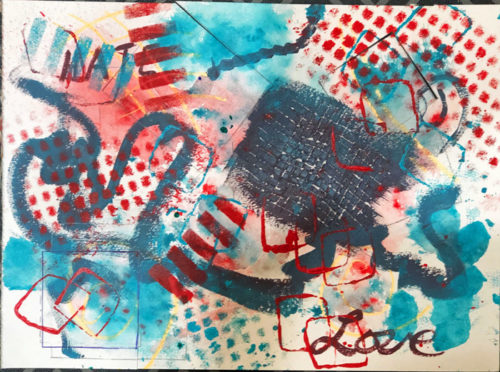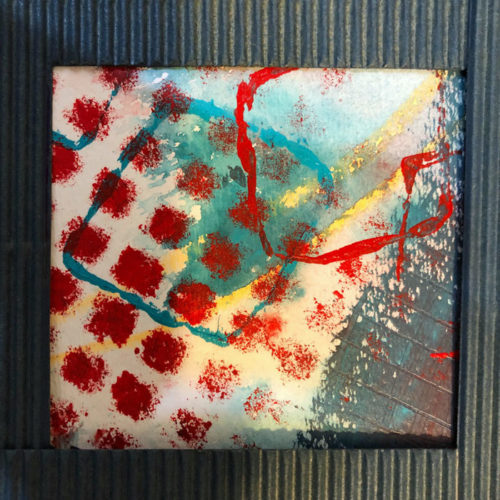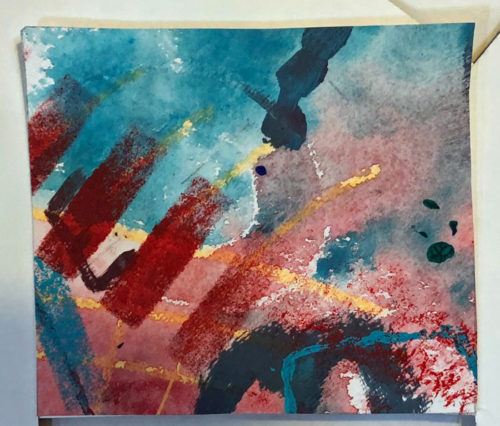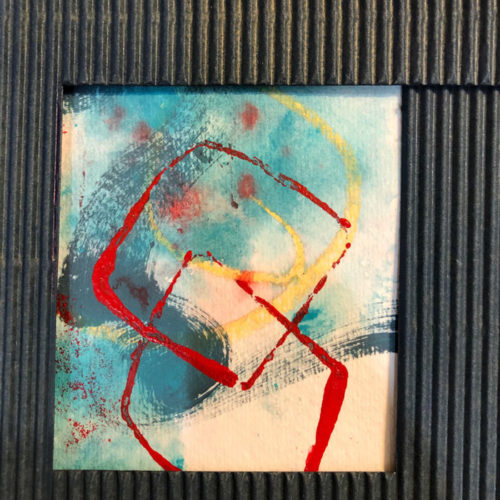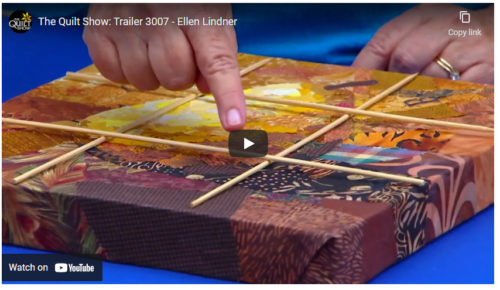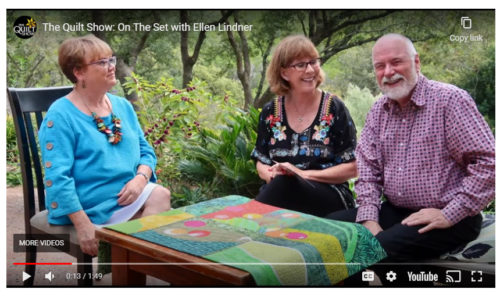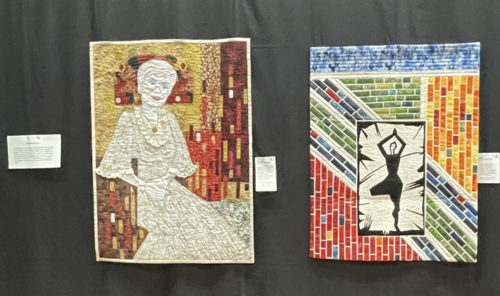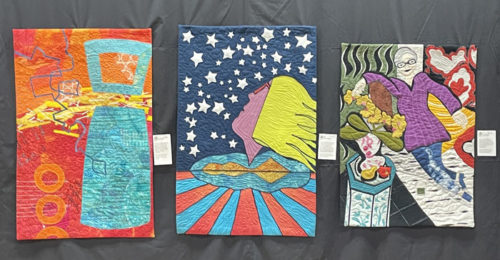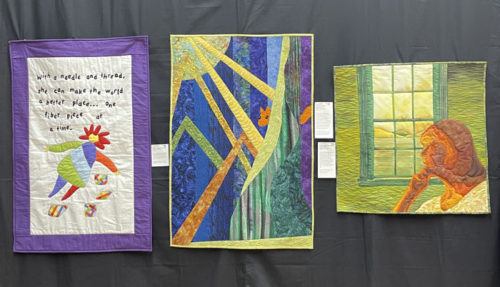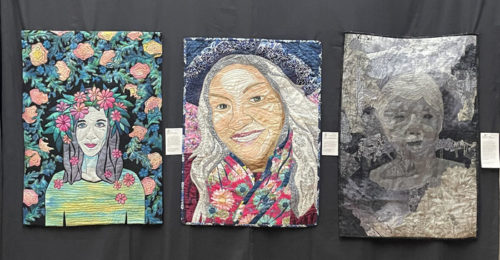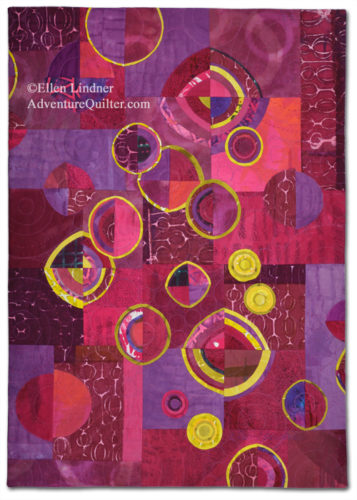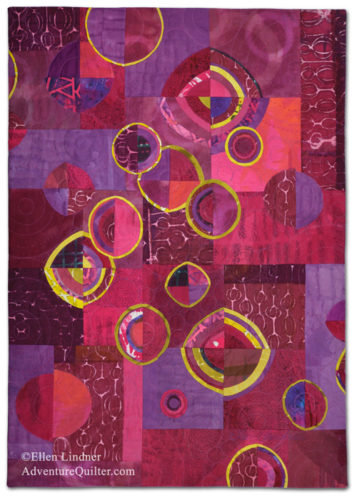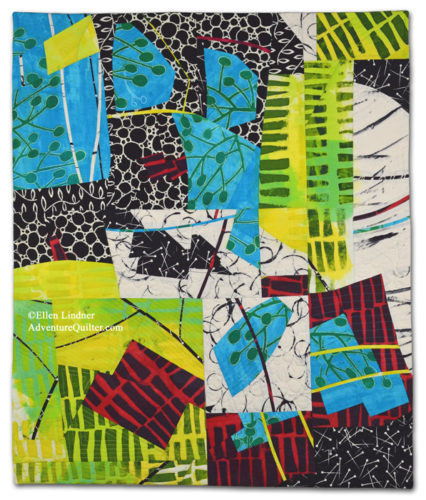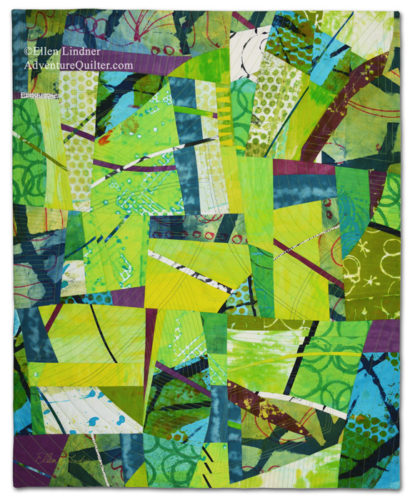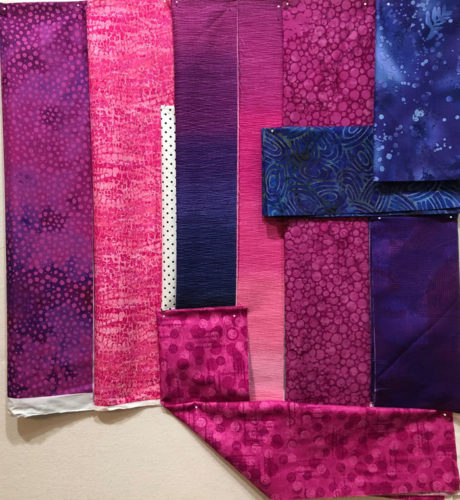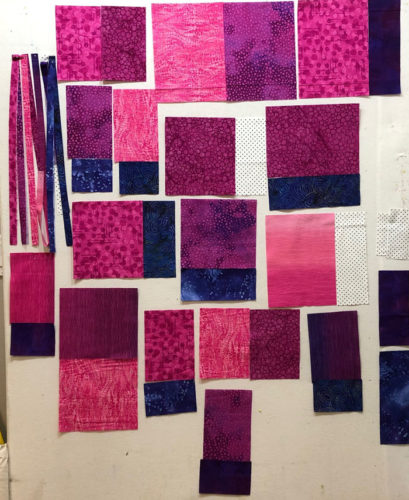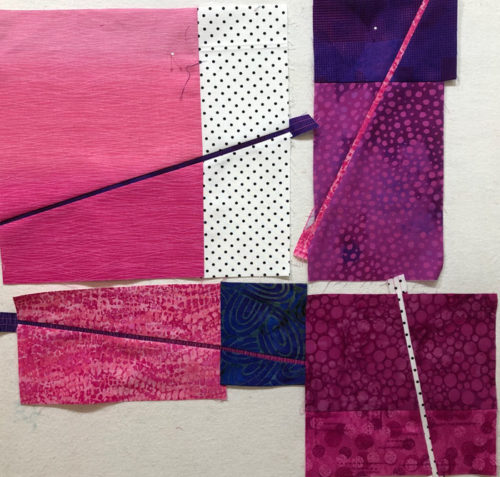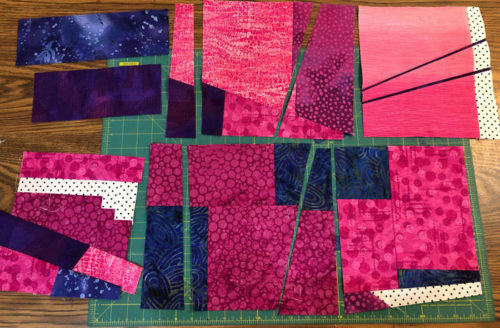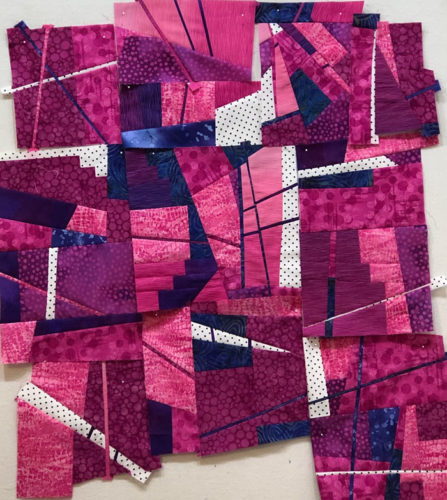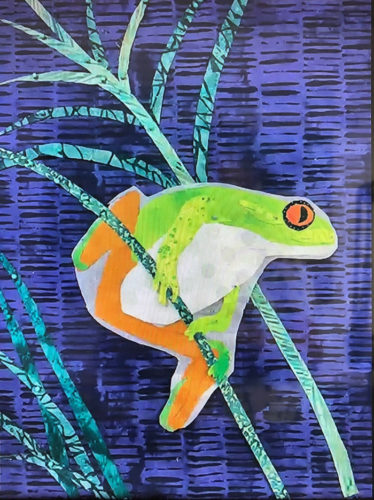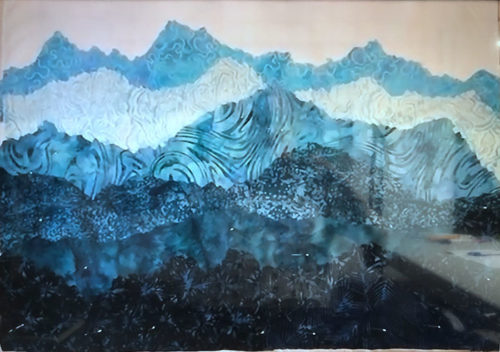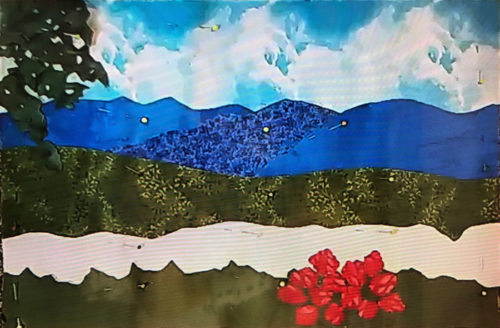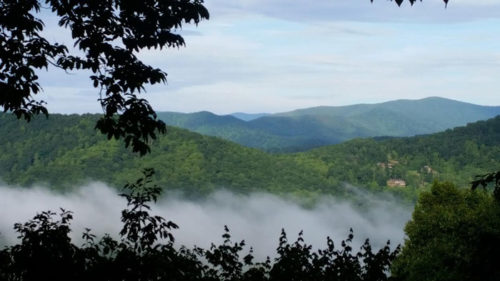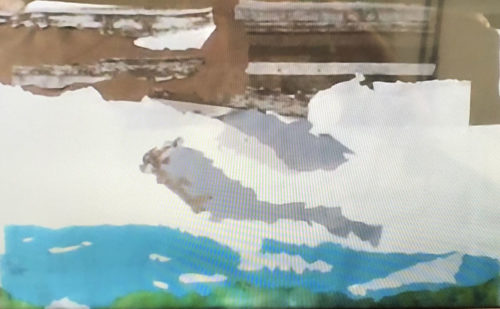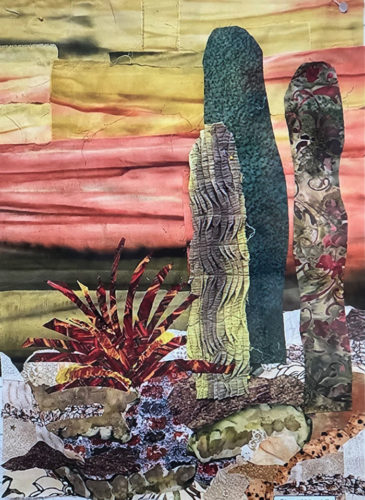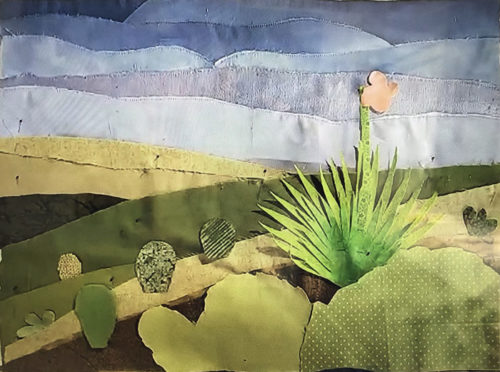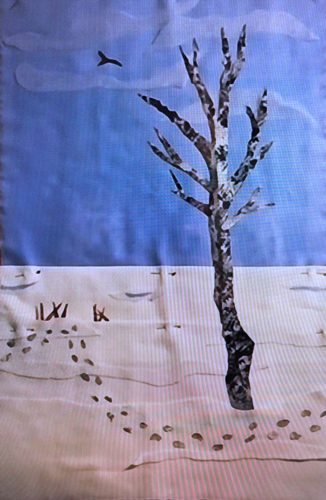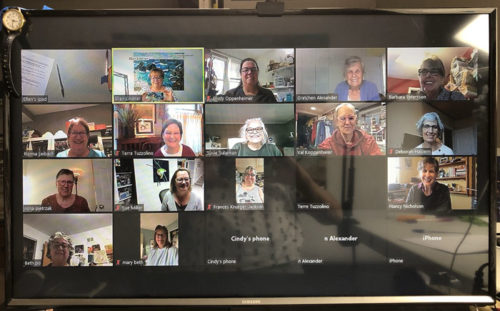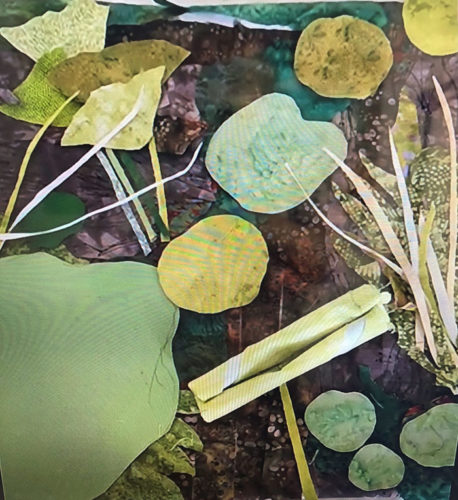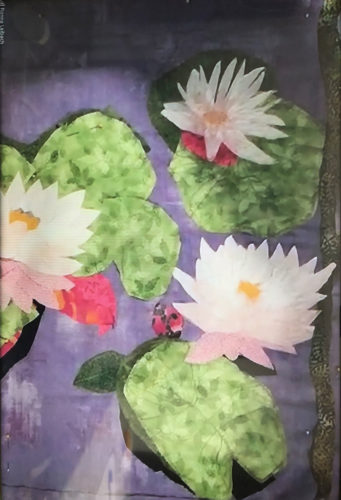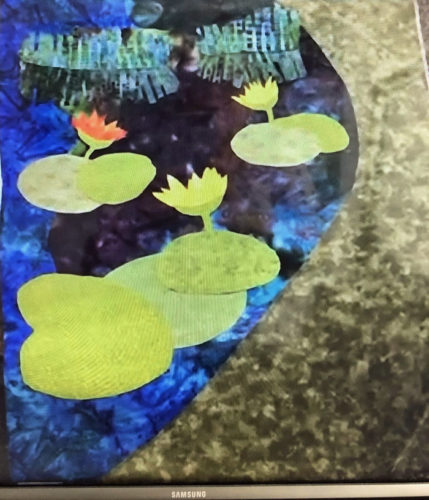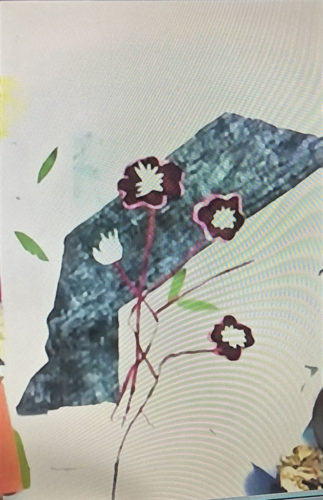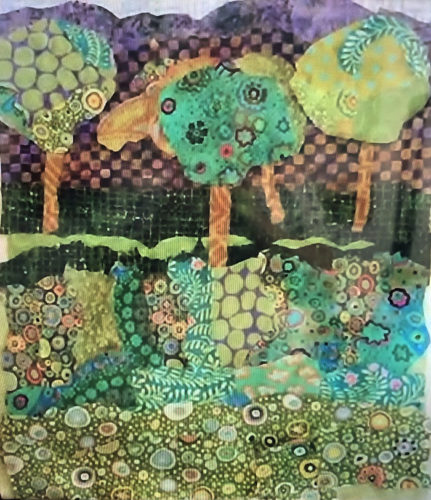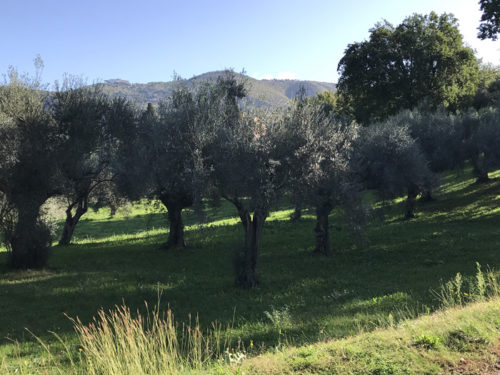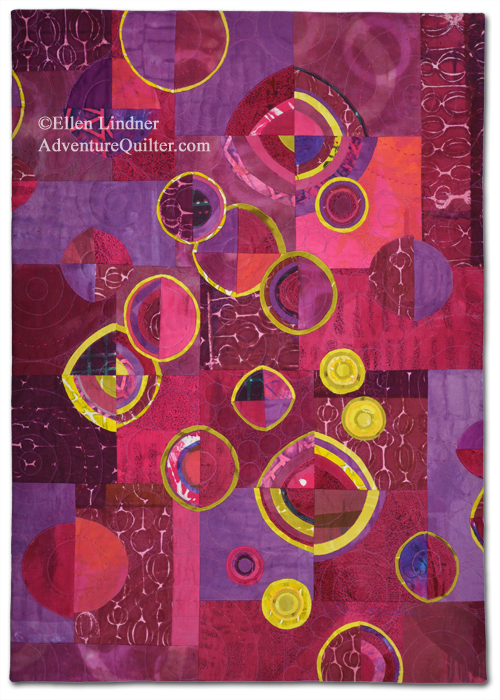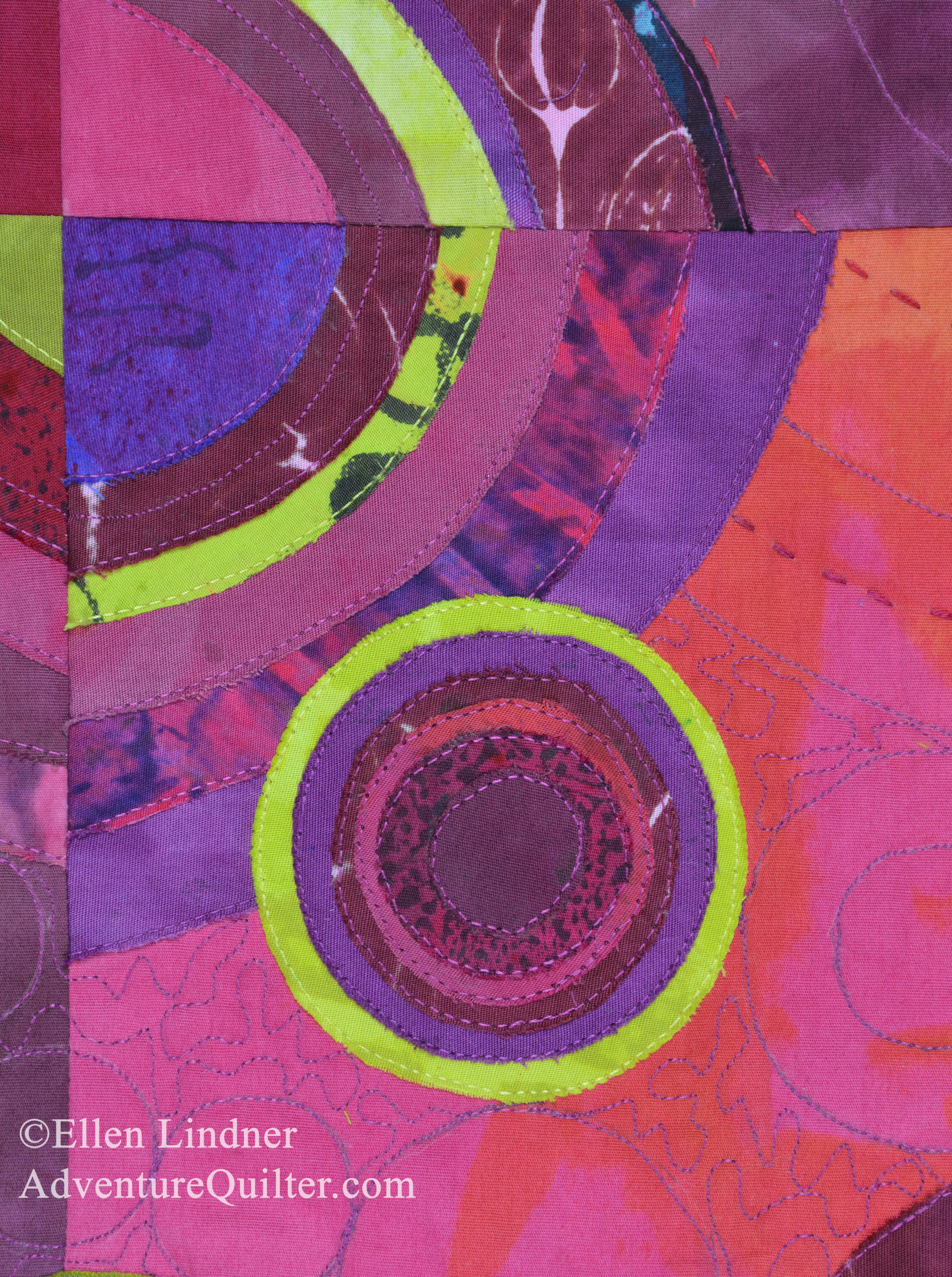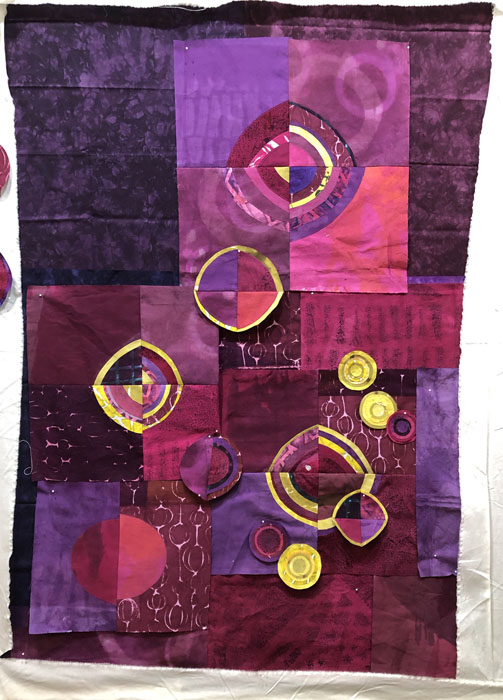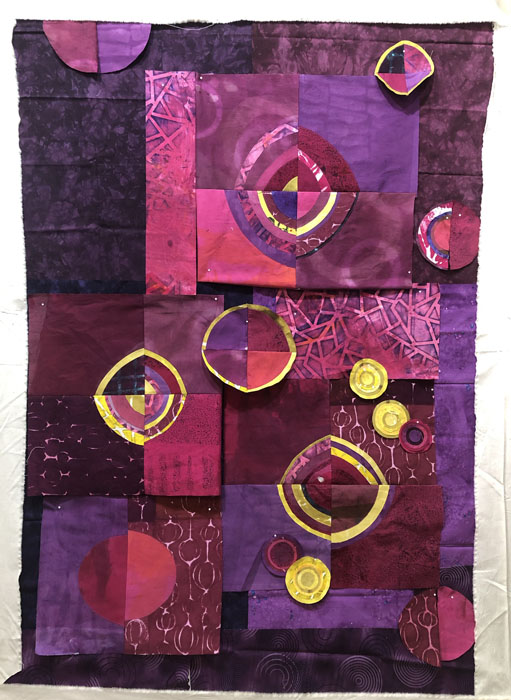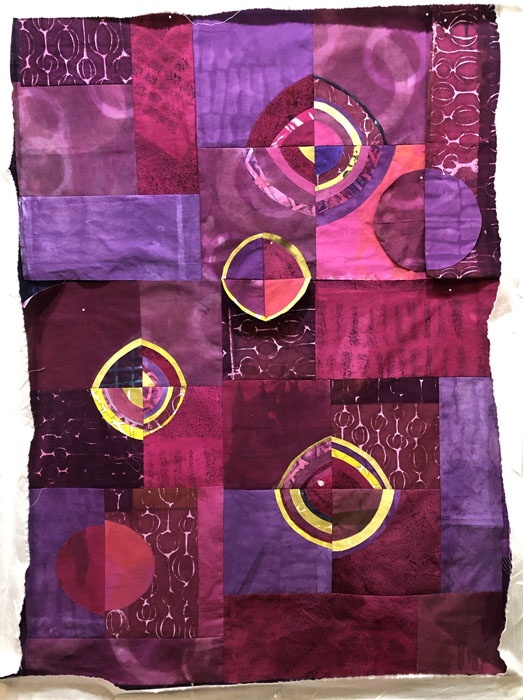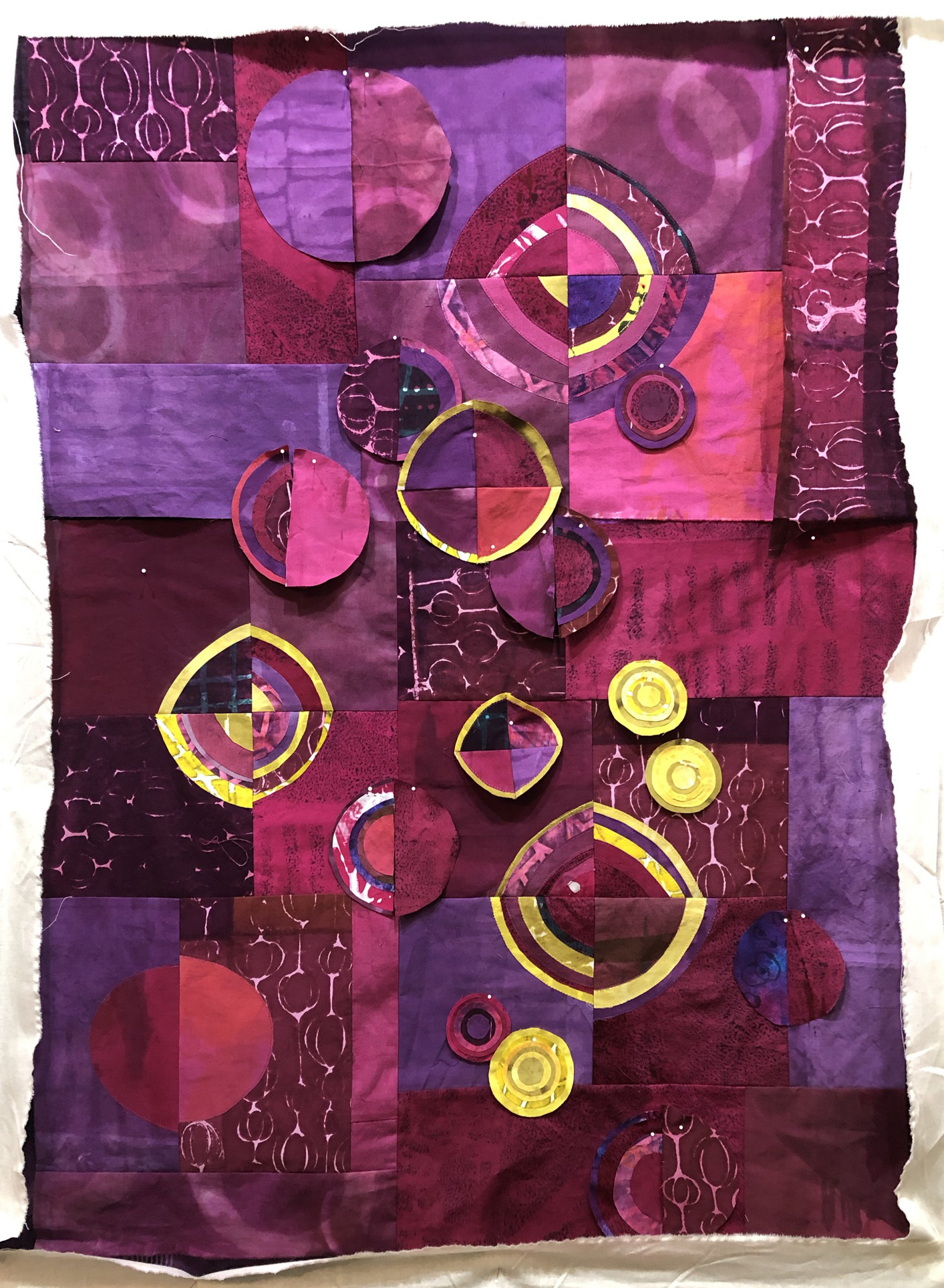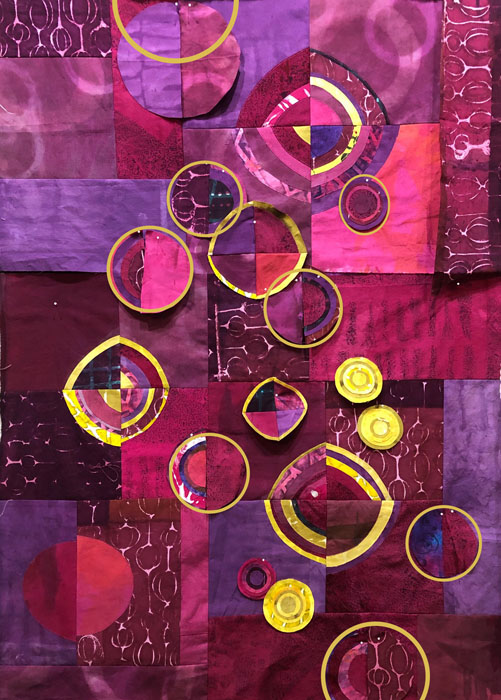I recently taught Double Reverse Applique (via Zoom) for a guild in Concord, MA. As usual, the students had awesome results. Just take a look.
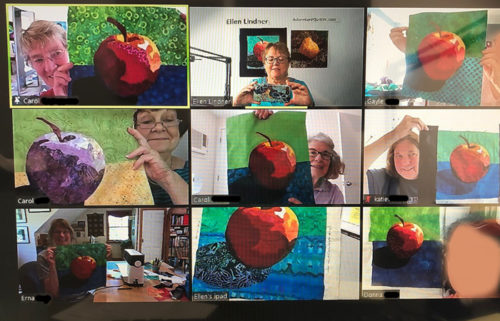
They really did a great job!
Here are some more great student pieces that I’ve been remiss in showing you:
Susan Newsom’s project from Floral Improv
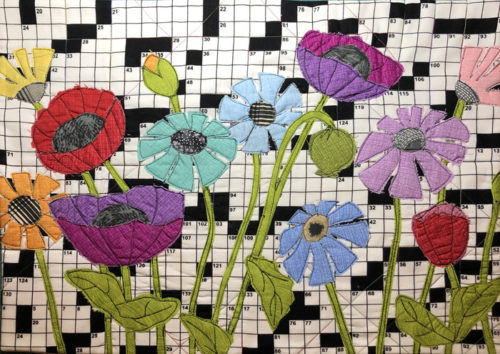 She did a great job with floppy flowers, contrast stitching, and that crossword background.
She did a great job with floppy flowers, contrast stitching, and that crossword background.
In Design Your Own Nature Quilt, John Ming Mark REALLY got creative with his quilt! This was his inspiration photo. To me, it wasn’t very exciting. But, I could see potential for some interesting diagonal shapes and lines.
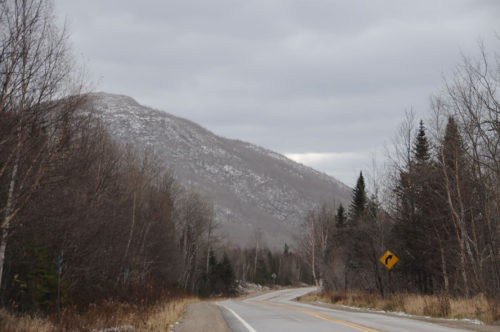
This is what he did with it, called “Enchanted Forest.” Isn’t it wonderful? I was amazed at the colors and shapes he brought to his piece! I think it’s very successful.
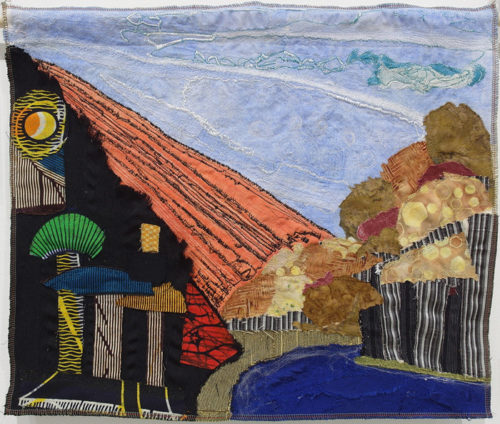
Gabriele started with a favorite photo of lupines on a shoreline.
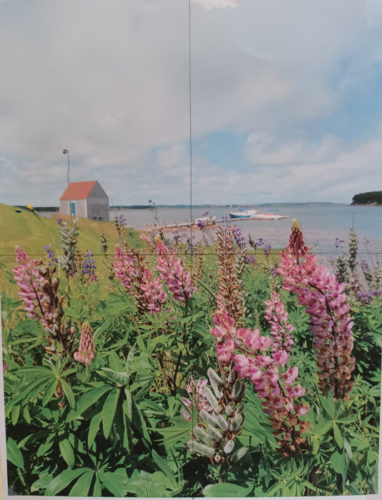
Then, she interpreted the shapes loosely and made a wonderful composition, which she calls “Lupines.”
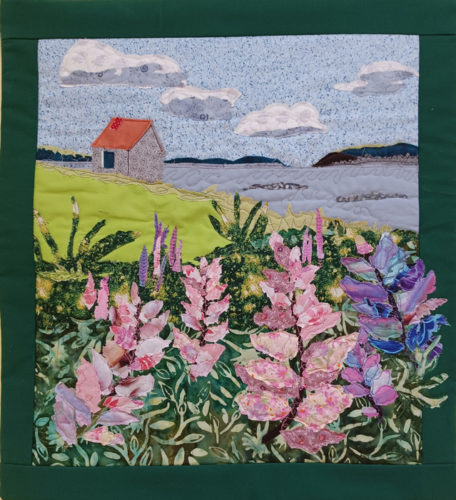
See what I mean? Her flowers are even more interesting than those in her photo! And check out the foliage in the foreground. This is a good example of letting the fabric do the work for you. If I remember correctly, she only used two fabrics in this area.
I have SO much fun working with students and we’re always ALL thrilled with their results!
Ellen Lindner
P.S. Many of my classes are available on-demand as self-paced online options.
P.P.S. I’d love to do a zoom or in-person class for your guild. See my selections.

